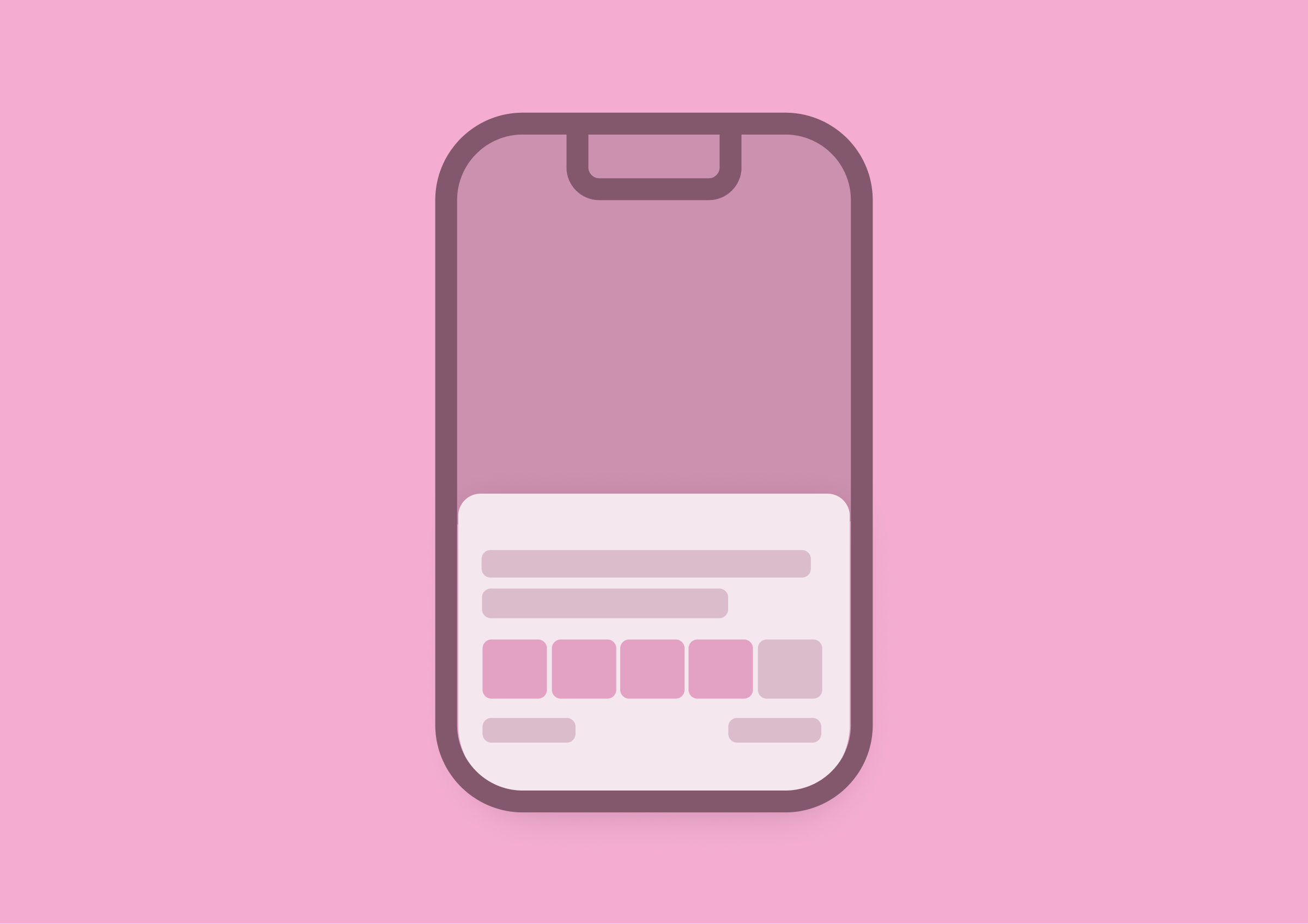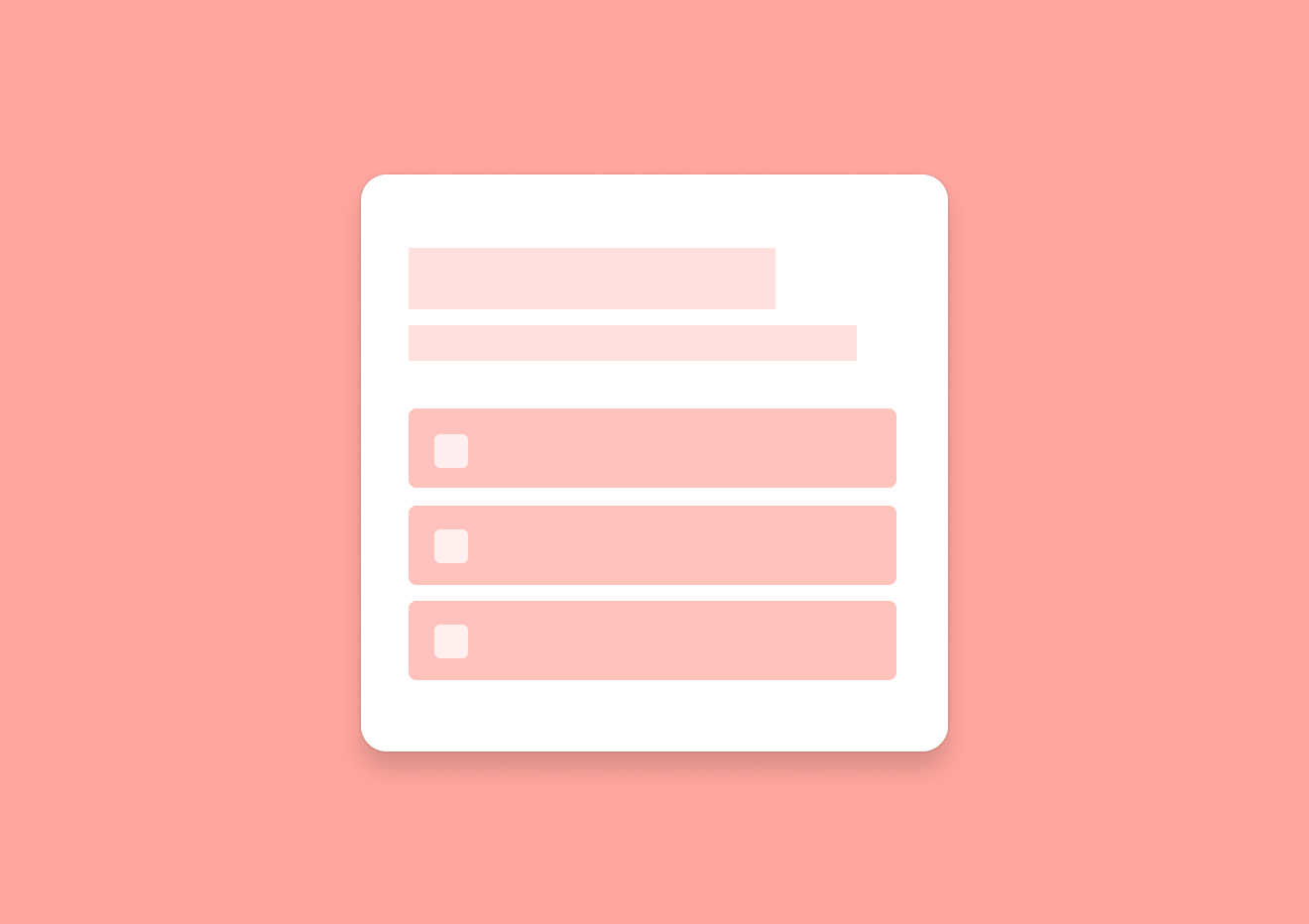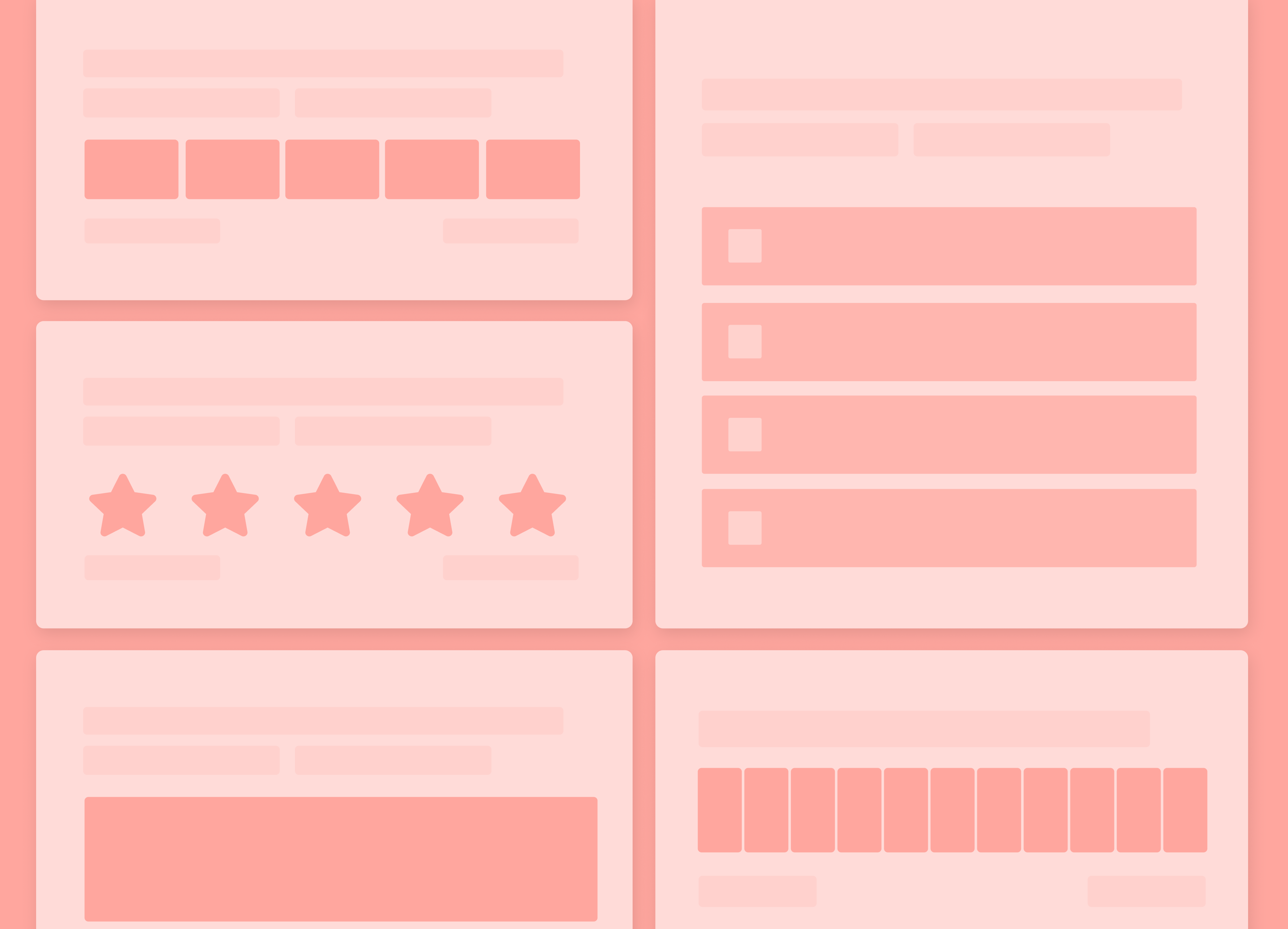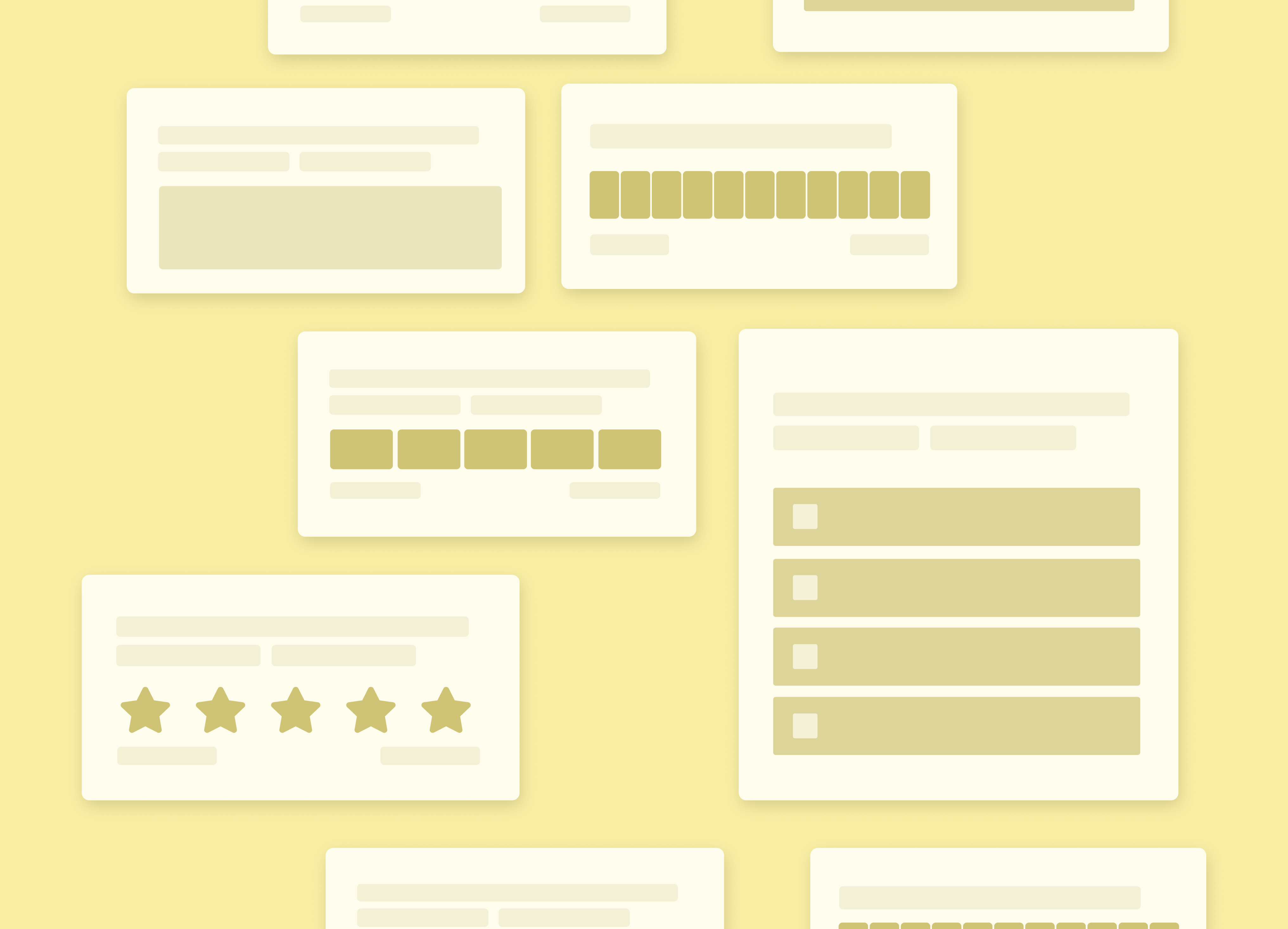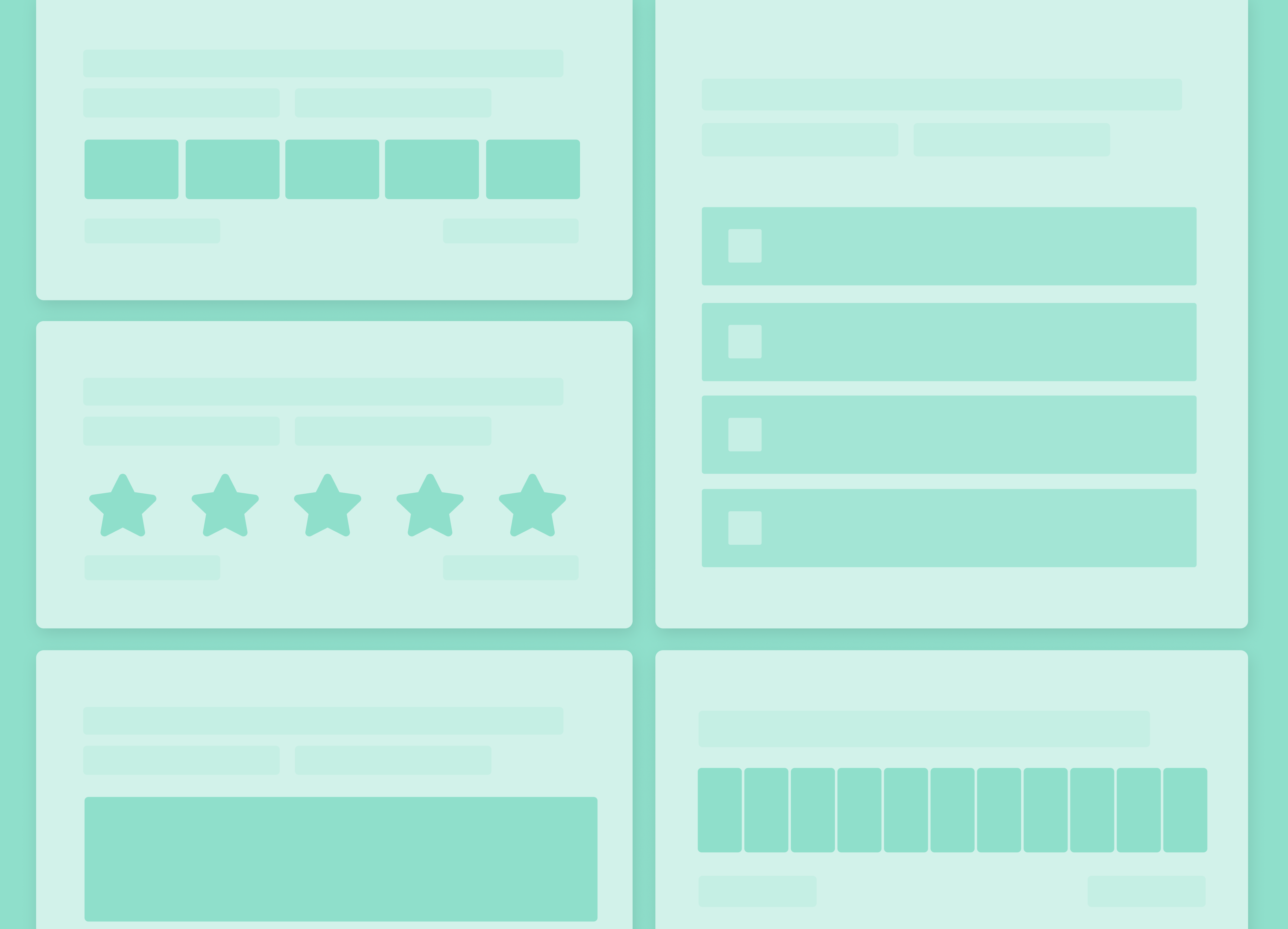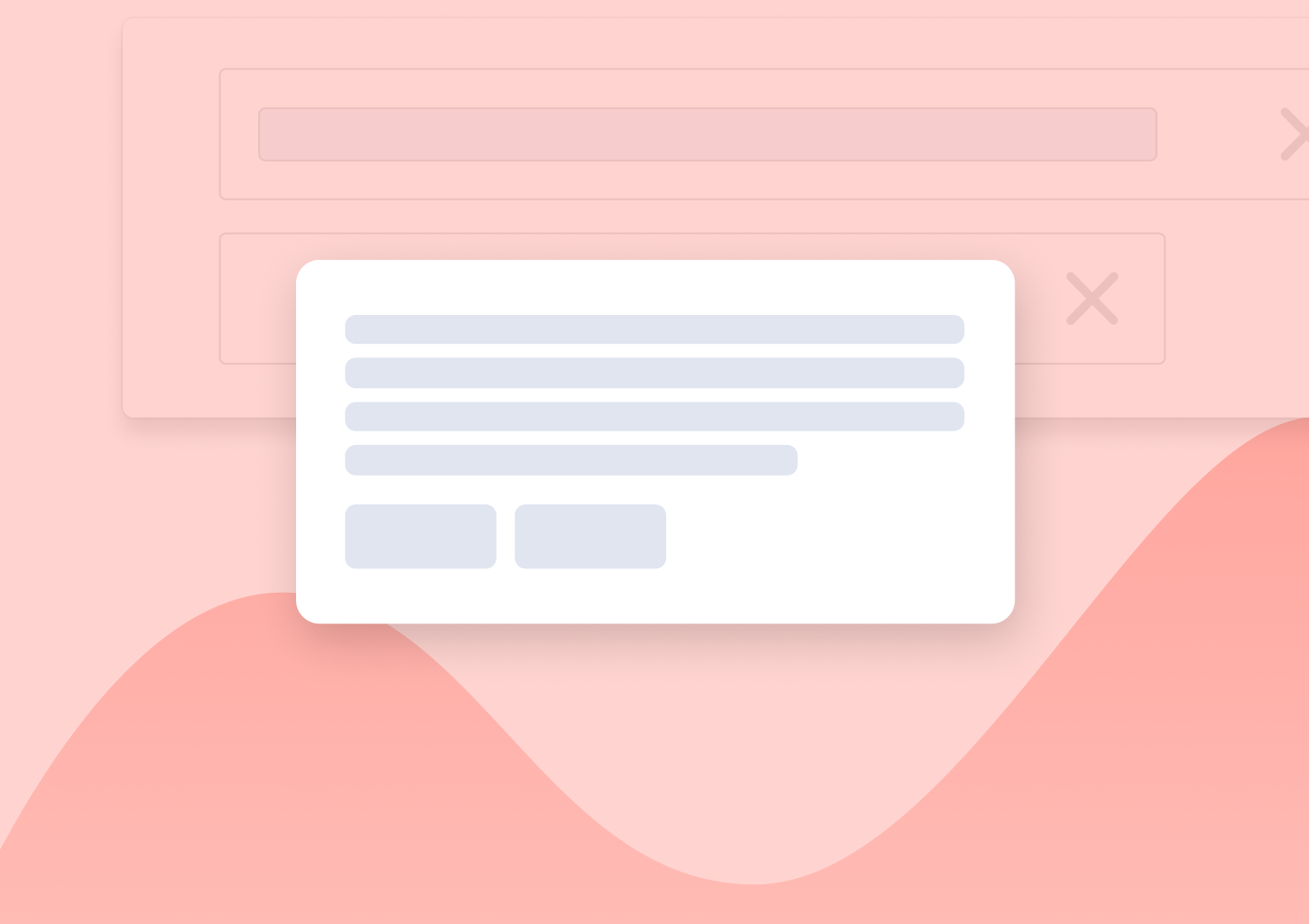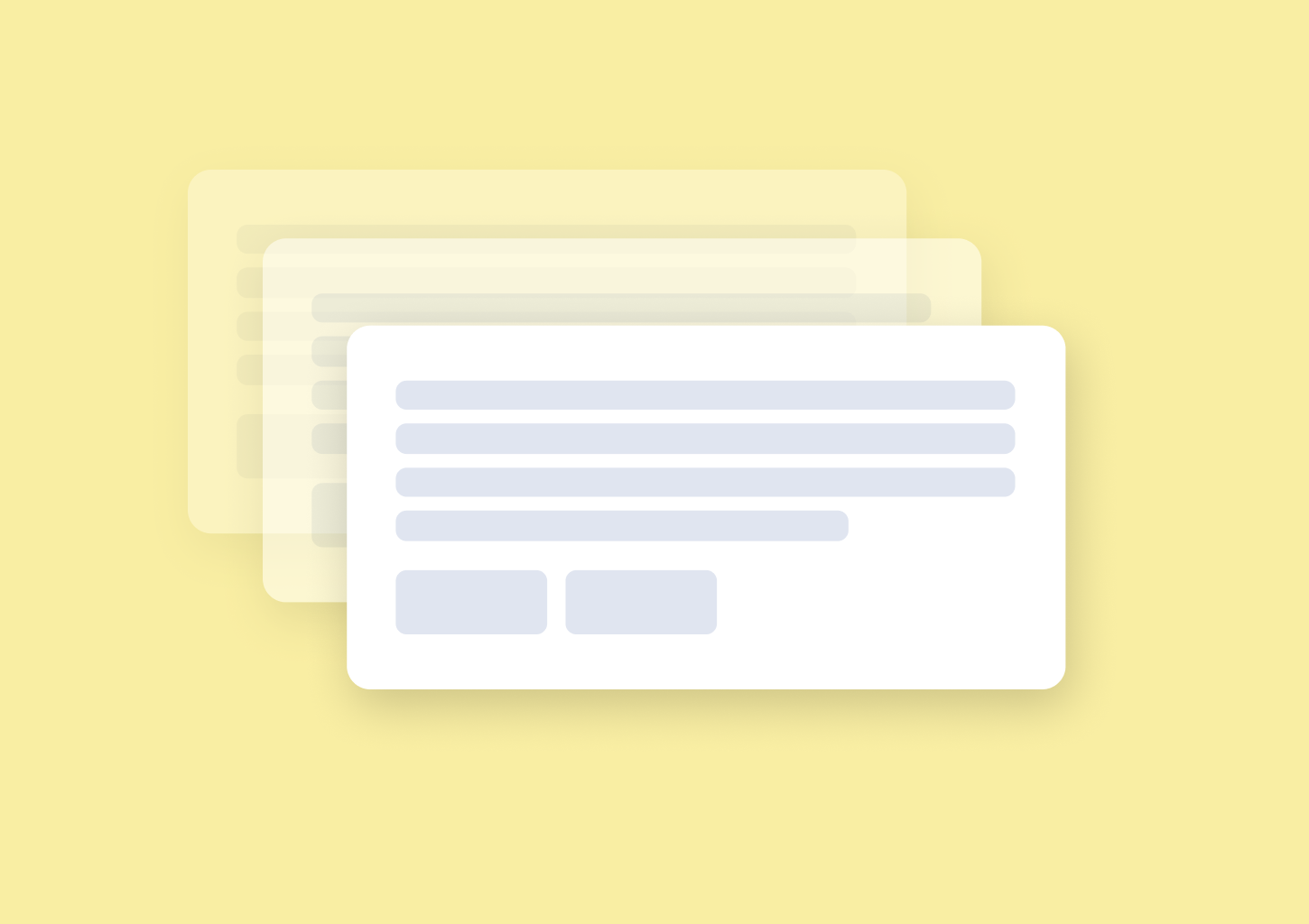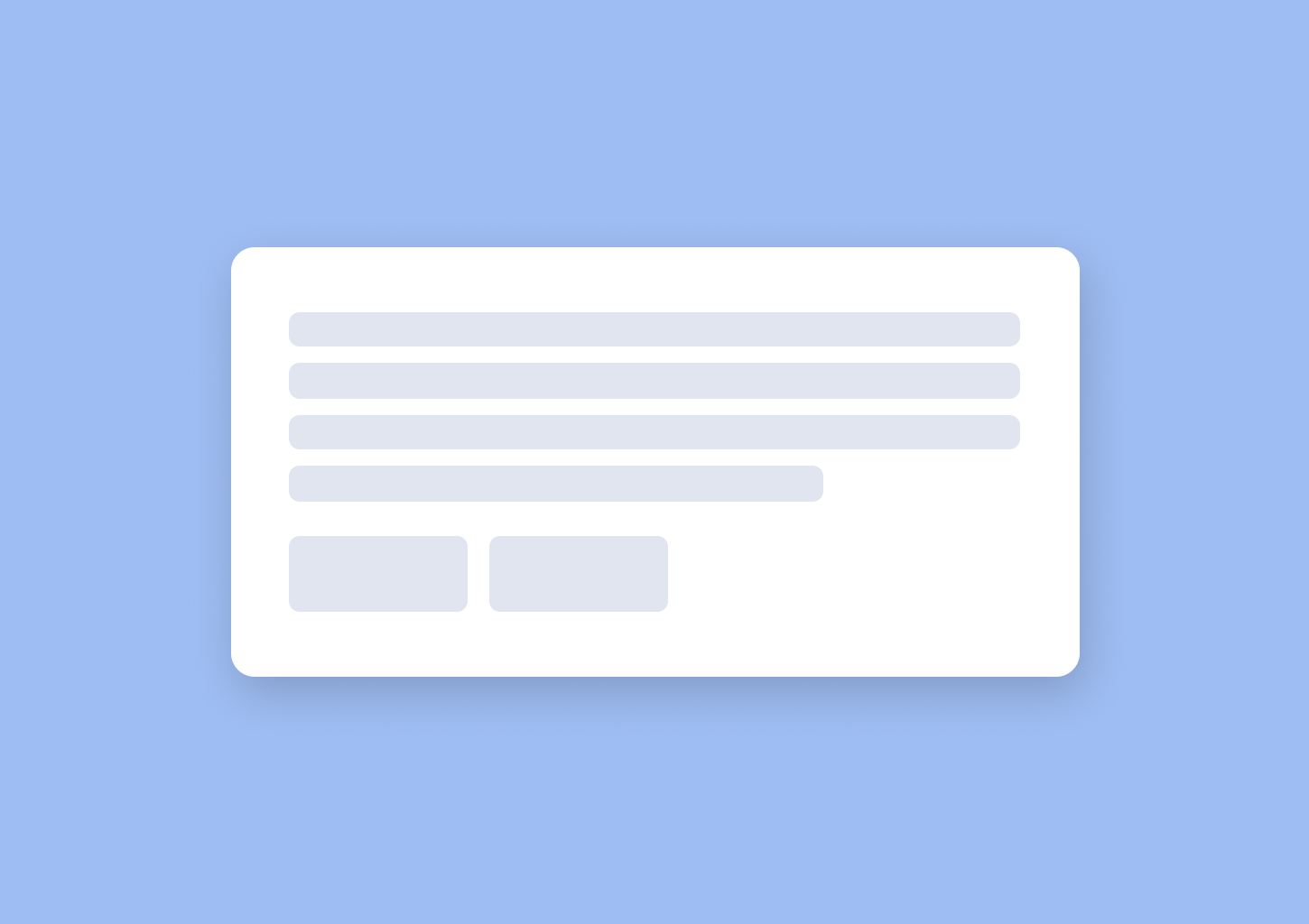What are In-app Notifications and Why You Must Be Using Them
I know this is going to sound blunt, but I gotta ask: Have you ever used a SaaS product that wouldn’t show you an in-app notification at one point or another?
Me neither.
Of course, I’m not saying that everyone’s using in-app notifications, it’s far from it. For one, most likely, you’re reading this guide exactly because you haven’t been using in-app notifications yet and want to implement them. But still, triggering in-app notifications is a fairly common practice in SaaS.
In this guide, you’ll learn how to use it in your product, too.
Here’s what we are going to cover in this guide:
What is an in-app notification?
We’ll go through the concept of showing notifications to users in the app and discuss various aspects and elements of an in-app notification.
Examples of in-app notifications
I’ll show you some examples of what good (and bad) in-app notifications look like so that you can understand what works and what doesn’t.
In-app notifications vs. push notifications
We’ll also discuss the differences between the two and what often confuses people with one another.
Common use cases for in-app notifications
I’ll show you when to use in-app notifications and what objectives you could achieve with them.
Different types of notifications that you could display in-app
Yes, there is more than one in-app notification that you could trigger in your product, and we’ll go through them in this section.
Creating an in-app notification
I’ll also walk you through the complete step-by-step process of creating and triggering an in-app notification.
There’s quite a bit of information to cover so let’s get right into it.
What is an in-app notification?
I admit that the term itself – in-app notification – may be giving pretty much everything away. Because what else could it mean than a notification or a message that you display within an app, right?
Well, if that’s what you thought, too, then bingo. You’re spot on.
Bravo!
An in-app notification is nothing more than an in-app message you trigger and display within the app to users who are interacting with the product right now.
Here’s an example of an in-app notification. Notice how the company is using the medium to tell users about new features and improvements they’ve launched recently.

But there is something in the definition I’ve provided that I must clarify. You see, I suspect the phrase “right now” may be a little misleading.
When I say “right now,” I do not mean the time when you triggered the notification. In this case, “right now” refers to the moment when a user logs in to the app and begins working within it.
Because if you think about it, to them, the notification appeared on screen “right now” as they’ve been doing whatever they’re doing in your product. And that’s even though it’s been hours since you’ve launched the campaign.
There is one other phrase in my definition that I probably need to clarify – “nothing more than.”
Usually, a phrase like this may sound as if it diminishes the value of whatever it’s describing. That’s not the case here. My reason for using it is literal. An in-app notification is literally, a notification, a message that your users see in the app. That’s it.
But it doesn’t mean that it’s something insignificant or less than any announcement you send through other channels.
Far from it. In fact, as you’ll see shortly, a typical in-app notification can pack a much harder punch than many other messages and marketing channels.
But first, let me show you a couple more examples of in-app notifications
First, let’s start with two examples of simple notifications. One explains the holiday support hours; the other tells a user more about new product functionality. Take a look.
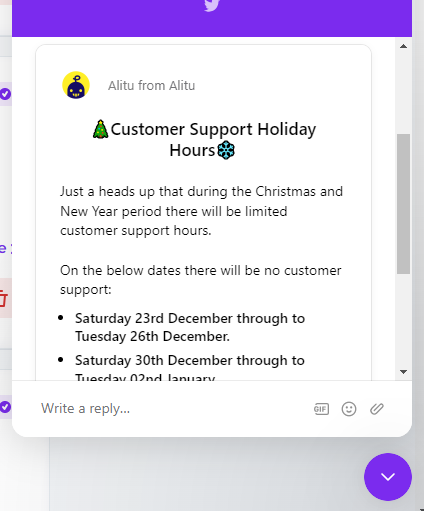
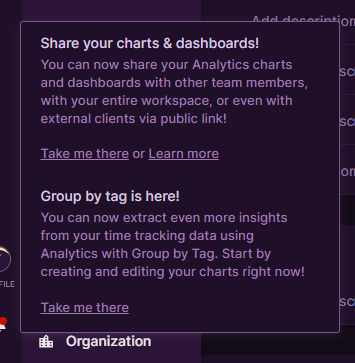
This is what an in-app announcement looks like. In this case, the company uses an in-app notification to promote its customer training.

But actually, before I saw that notification in my account, the company also presented me with a simple tooltip. That’s because this particular functionality has changed, and the company wanted to ensure that I know about it. Here’s what the tooltip looks like. Note that you can see the aforementioned announcement behind it.

And this is a new feature announcement in my time tracking app.
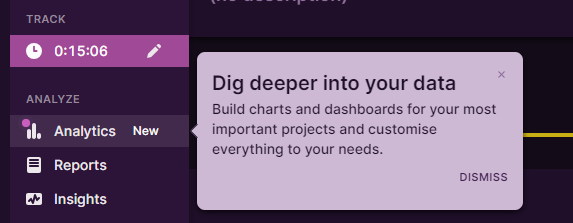
Of course, there are other types of in-app notifications, and I’ve explained them in another section below.
For now, we have another issue to consider…
Aren’t these notifications the same as push notifications?
No, they’re not. But I admit that it’s quite easy to confuse one with the other, so let me clarify that now.
Let’s start with similarities (because that’s what makes many people confuse in-app notifications and push notifications with each other.)
So, both in-app and push notifications:
- Help companies provide information to users.
- Offer a way for companies to engage their users, too.
- Not to mention that both of these notification types help companies communicate with users in real-time (remember the “right now” issue we discussed earlier?)
But there is a subtle difference between them.
You see, in-app notifications trigger INSIDE the app. Push notifications trigger OUTSIDE the product.
Think about it – Push notifications typically show up on your smartphone’s display, right?
They tell you about something new that happened within the app. They notify you of a new message. They provide you with additional information or statistics that you might need at present.
But they disappear when you come back to the product.
You can see in-app notifications only when you log back into the product. They’re nowhere to be found as far as your phone’s display or the lock screen is concerned. But log back into the app, and you’re bound to see an in-app notification there.
The difference between them is more technical than anything else, I admit. But it does affect how you use each notification.
- Push notifications are perfect for engaging users who are not using the app at present. In fact, they are a great way to bring them back and re-engage them with the product.
- In-app notifications, on the other hand, are an ideal channel for engaging users who are in the product at present.
As I said, it’s a subtle difference but an important one to understand, too.
This brings us to the next point…
Why use in-app notifications? What can you get from triggering notifications within the app?
I guess the best place to start this part of our discussion is by taking a step back because it’s easy to start thinking about in-app notifications as a channel or strategy of its own.
It’s not.
I can’t think of anyone launching in-app notifications for the sake of doing so.
Usually, the strategy is part of something bigger….
Earlier this year, I posted a lengthy guide (very much like this one) to product-led growth.
I’m sure you’re familiar with the concept, but in case not, my guide is a great place to start.
But in short, product-led growth places the product at the center of your organizational objectives to drive acquisition, engagement, and retention.
In other words, your growth is determined by the product, not the sales team.
What’s that got to do with in-app notifications? Well, as you see in just a moment, in-app notifications help you achieve quite a number of typical product-led growth objectives.
#1. In-app notifications help engage users
Look at the examples of in-app notifications I’ve shared above. Notice how many of them have been designed to engage users of those products. (Note, we’ll shortly go through a list of different ways to do that with this strategy.)
They tell users something. Those notifications help them use the product better. They introduce new features or may even hint at what’s coming to excite users even more about the product.
In short, they provide you with a way to engage with your users and open a direct communication channel for you to do that.
#2. In-app notifications = Much better UX
I admit that UX is quite an overused term. Many people throw it into anything product-related. But there is also a reason why they do so (even though I might disagree with the discourse that follows) – UX is critical to product-led growth. In fact, I risk saying that there is no growth without it.
But UX is also incredibly challenging, and one reason for that is a lack of that direct communication channel I mentioned above.
In-app notifications can act as such a channel and help you support users and boost their overall experience.
#3. In-app notifications help combat churn (big time!)
Churn is… well, churn. It’s there, and we, SaaS founders, don’t like it. But it’s also something we can try to combat, and in-app notifications provide us with a way.
The key to this is once again in the phrases “engagement” and “user experience.”
With in-app notifications, you can send timely updates to users. Or show new features, point them to other features they may have missed, address their concerns, educate them, and do pretty much everything else to ensure their success with the product.
I know, I know, it feels like a pipe dream to retain users like that, but it does work.
#4. In-app notifications help onboard new users, too
In-app notifications can help you introduce new users to your product’s UI. With these notifications, you can introduce and entice them to try specific features and then slowly drip feed information about your product’s other capabilities. All to get them to that “aha” moment and reach the activation point.
#5. In-app notifications are the best way to notify, excite, and upsell users, too
We rarely see these as communication objectives, but it’s true – Sometimes you just want to tell users something. The message could be as mundane as a notification about scheduled maintenance, for example. Or a quick piece of information about a new blog post you’ve published, a new initiative you’re undertaking, etc.…
It doesn’t matter what it is. What matters is that there is no better way to tell users about it than when they’re already engaging with the app.
#6. Finally, in-app notifications give you an insight into your user’s interests, pain points, and behavior
You know, often, we mostly consider what we’re getting from sending a particular message to our users.
But as usual, this coin has the other side – The data you get from monitoring how users interact with the message.
And let’s face it, you can derive quite a lot from observing things like what messages engage your users the most when they engage with those messages, what placements work the best, and so on.
Such performance data can be a treasure trove of information about your users. Information that you really can’t get anywhere else.
Different types of in-app notifications
Let’s turn our attention to more tangible aspects of in-app notifications.
First, although it may seem otherwise, there is more than one type of such a message that you can display.
Your in-app notification can be a tooltip, pointing someone to a particular aspect of the UI.
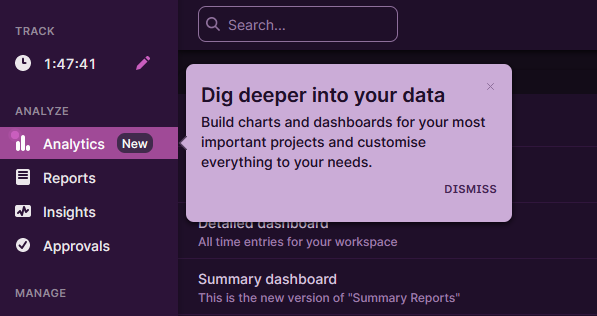
You can also display a popup with your message and set it to appear in different parts of the interface.
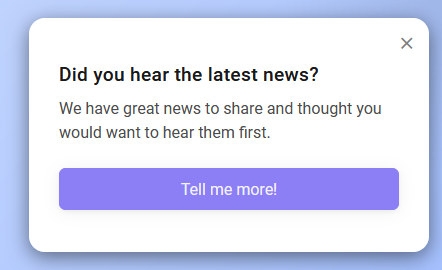
You could use a banner to communicate your news with users. This example features not one but two banners with different announcements.

Another common type of in-app notification is a widget like this one. By the way, if this looks very much like a live chat widget to you, you’re spot on. These in-app notifications often take a similar shape. What’s more, many live chat products include the option to trigger notifications as part of their widgets.

In-app notifications are perfect for surveys, too. In fact, surveys are probably the most common content of in-app notifications after user onboarding.
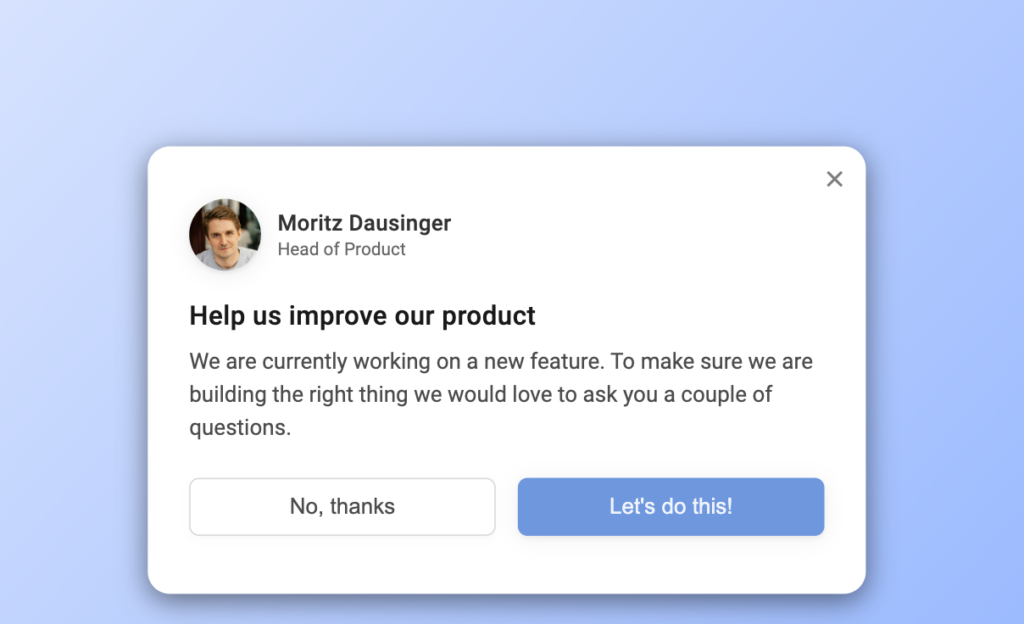
[TUTORIAL] How to create an in-app notification for a SaaS product
So, we’ve covered all the theory behind in-app notifications. So, to close this guide off, let me show you how to actually put together an in-app notification and trigger it in your product.
A quick disclaimer – For the purpose of this demonstration, I will be using my in-app survey and messaging app, Refiner.
TIP: Sign up for a free trial to be able to go through the process alongside me.
#1. New project
The process naturally starts with creating a new in-app notification project.
Refiner, as well as many other in-app notification tools, considers each project the same. In this case, a survey.
So, click on the “New Survey” button in the upper right corner to create a new notification. Then, select “Create from scratch” to build your in-app notification without using any predefined templates.
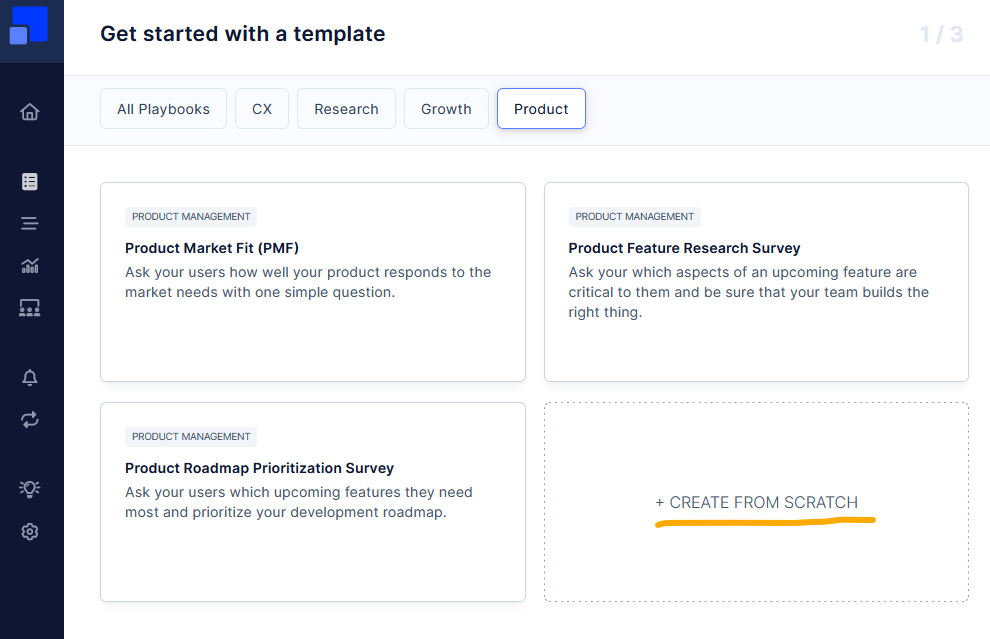
#2. Choose the delivery method
Most companies trigger in-app notifications either within their web or mobile app. So, naturally, as the next step, you need to specify where your in-app notification will appear.
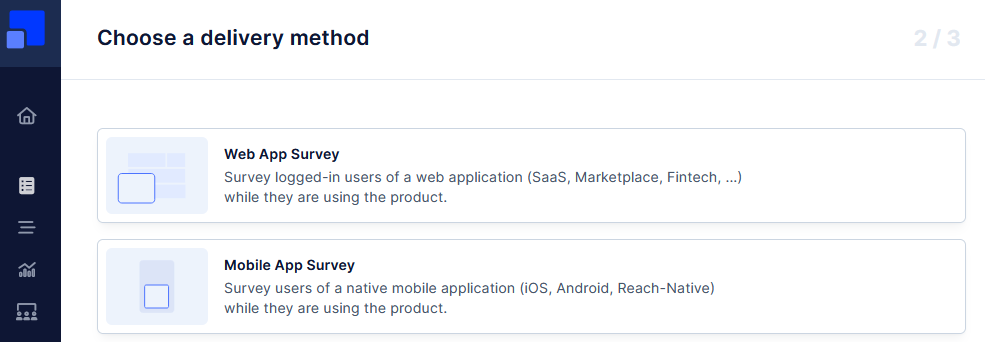
#3. In-app notification content
From then on, it’s all about adding content to your in-app notification. And the good news is that the process is actually quite simple:
- Start with a headline. Make sure that it’s strong enough to attract attention and also, communicates what the notification is about.
- Then, add the actual notification – that’s the main body of your message.
- Finally, specify the URL of a link, if you’re going to be including any, and of course, also specify the actual call to action copy to encourage users to take your desired action.
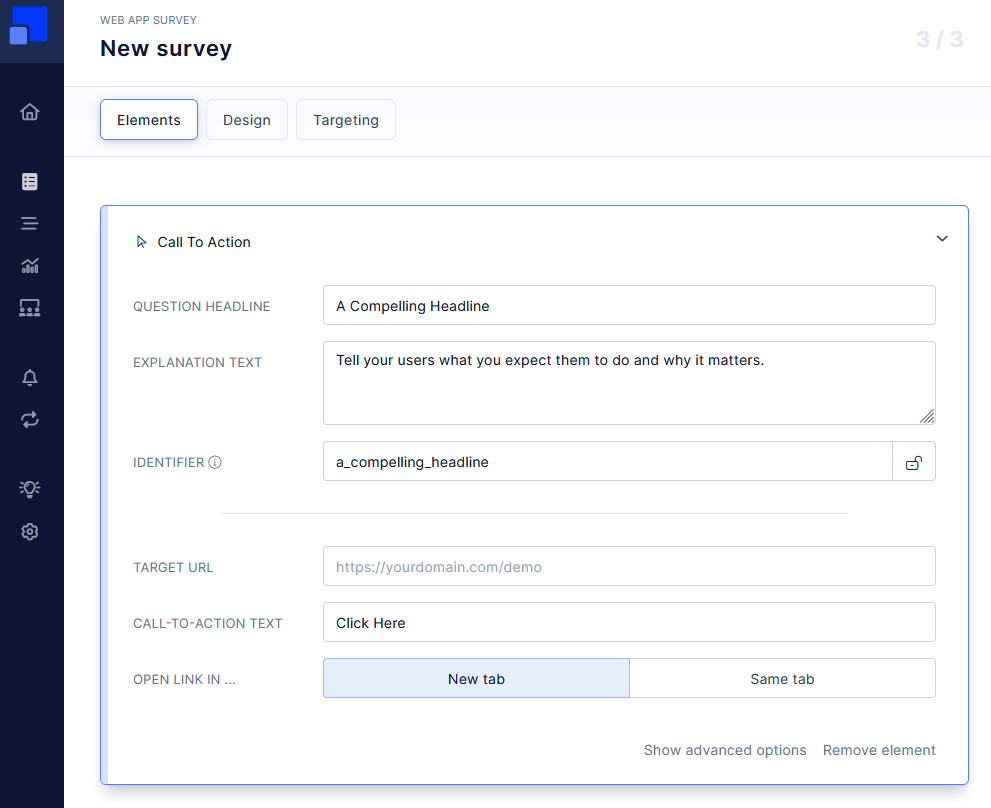
And that’s it. Your notification is practically ready to go live.
That said, there are other things you can set up to make it more attractive to users, and also, ensure that it reaches the right people.
#4. Design Customization
The main trick with in-app notifications is that you want them to both retain the look and feel of your product AND stand out enough so that users notice them.
And that’s something you can achieve by customizing your notification’s design.
Here are some ways in which you can do this in Refiner. You can:
- Add an image to make the popup more enticing.
- Specify where on the page the widget will appear. This, by the way, is more important than it might seem. In fact, we published research into the relationship between in-app widget placement and response rates, and I recommend you review it when planning your app messaging strategy.
- Add (or remove) various UX elements like the close button and more.
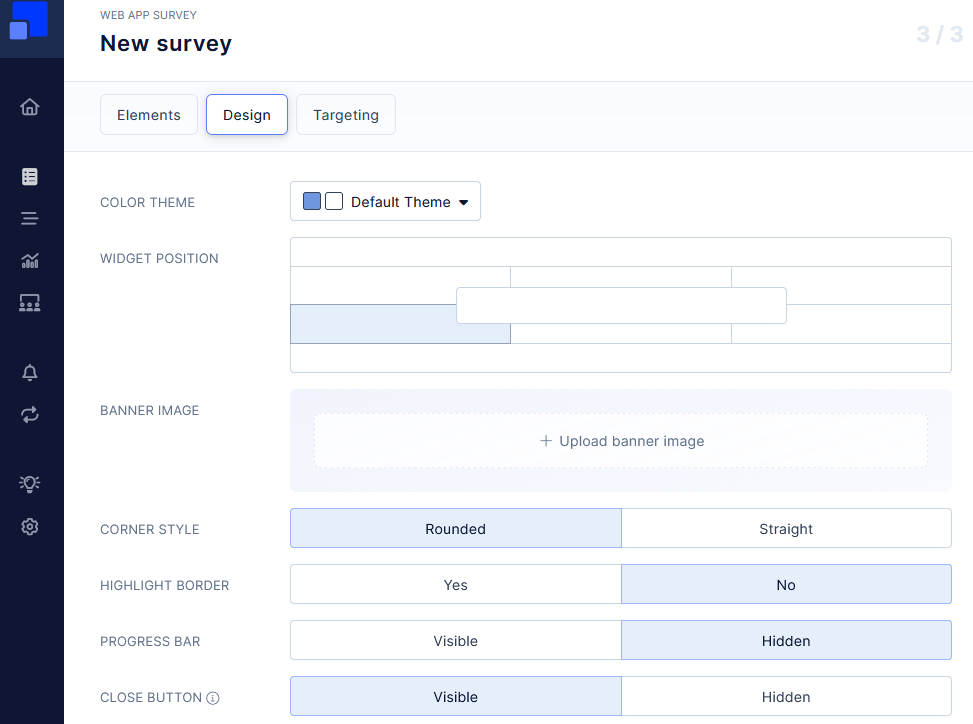
#5. Audience targeting and timing
Finally, you need to decide who is going to see your in-app notification. And you have several options here:
- You can display it to all users. This is perfectly normal for messages like new features or product announcements, for example.
- You can trigger the in-app message to a selected segment of your audience. These could be new users, and your in-app notification can help them with the onboarding process. Or you could send it to the most engaged users only, trying to move them to a higher usage plan, for example.
Naturally, the first option is easy. You just need to launch the in-app notification without specifying any audience segment, and Refiner will deliver it to everyone.
But if you want to be more specific about whom you distribute your notification to, you’ll need to define those relevant segments first.
Here’s what the setup to trigger the message to new users only looks like in Refiner.
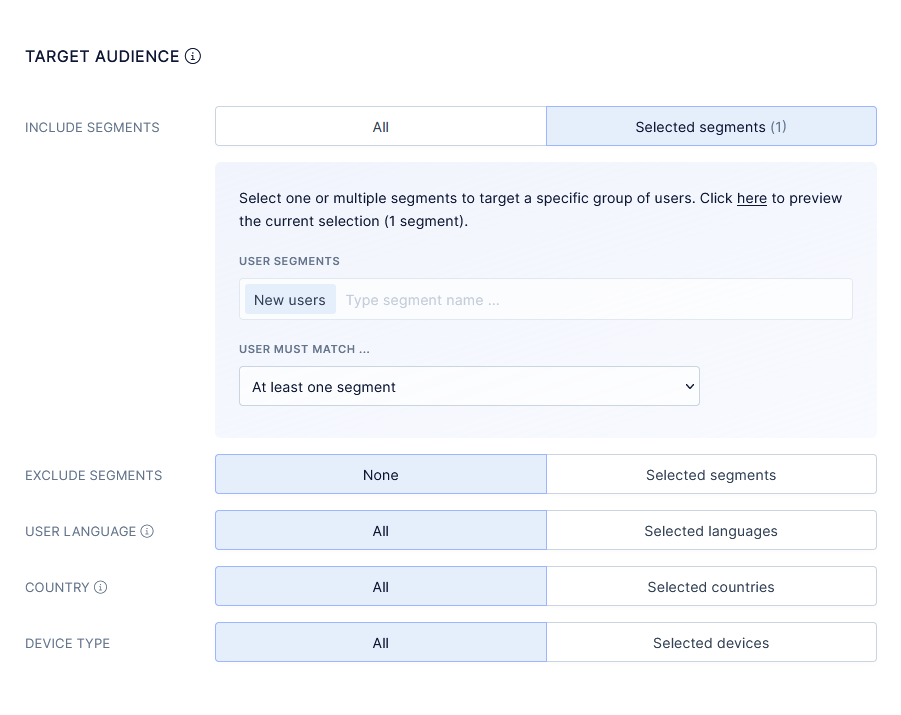
Last thing – Remember our brief discussion about the phrase “right now” we had when talking about what in-app notifications are? Well, now you’ll see why we’ve had it in the first place.
You see, Refiner also allows you to precisely define what that “right now” is for each user.
This means that you can decide to trigger the notification immediately after the person logs in to the app (or triggers a specific functionality.) But you can also set the system to wait for a predefined amount of time before doing so.
Like this.
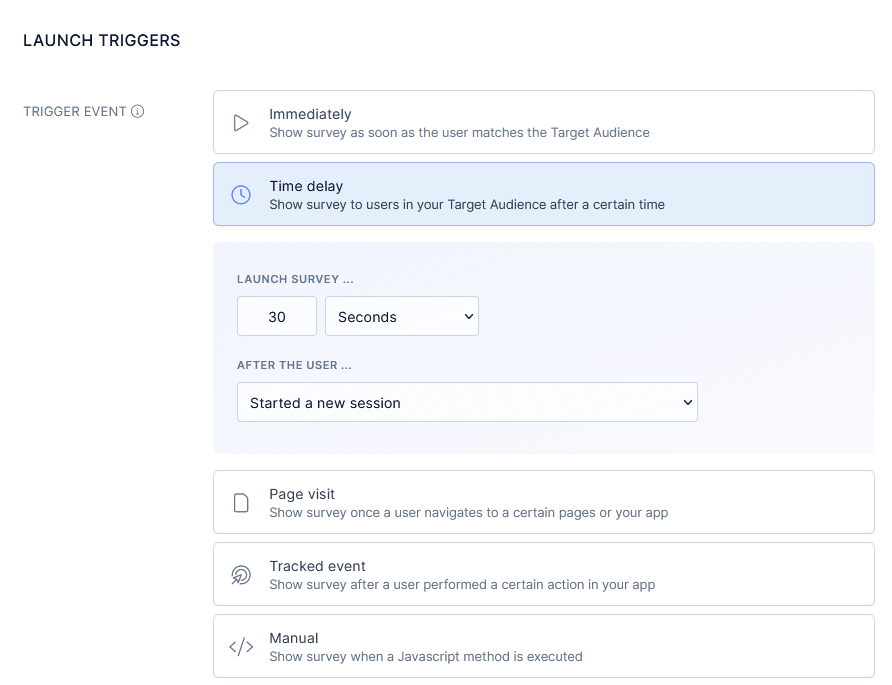
This gives you incredible power to ensure that the notification reaches the person exactly as they are the most susceptible to the message.
And that’s it…
That’s everything there is to know about in-app notifications. What’s left is to try the strategy yourself.
Good luck!
We help SaaS & digital product teams to better understand the needs of their users. Make better product decisions, find upsell opportunities and send ultra-personalized campaigns to retain more customers.
